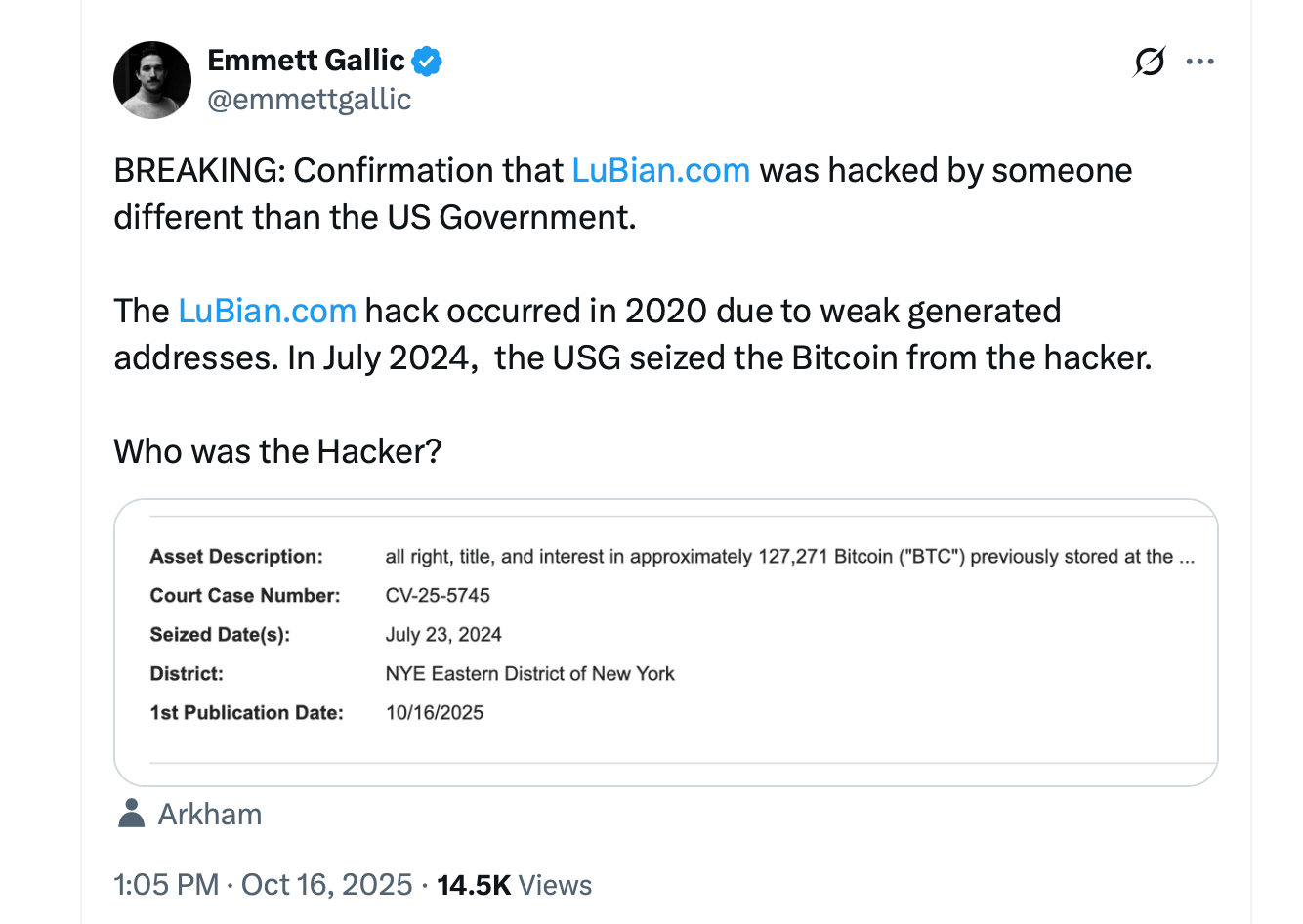Everyone’s buzzing about the U.S. government’s massive bitcoin haul — 127,271 BTC swiped from Chinese fugitive Chen Zhi and his infamous Prince Group scam empire. Onchain detectives, meanwhile, are tracing digital breadcrumbs back to Lubian.com, a defunct Chinese mining pool prosecutors claim was bankrolled with dirty money from Prince Group’s exploits.
Yet the real mystery gripping analysts is how the feds managed to snag the keys. The saga first surfaced two days ago when the U.S. Treasury and Department of Justice dropped the bombshell — unveiling the global fraud network and its alleged mastermind, while revealing their move to seize 127,271 BTC tied to Chen Zhi and his crew.

Observers quickly noticed that the wallets in question were linked to Lubian.com, a shadowy pool that Arkham Intelligence spotlighted in an August blog post. According to Arkham, Lubian never publicly admitted losing more than 127,000 BTC (valued at $13.7 billion today), but somehow still had a hefty stash north of $1 billion — until those coins started moving this week.

Screenshot of the U.S. government’s forfeiture.gov notice posted Oct. 16, 2025.
Then came the kicker. On Thursday, analyst Emmett Gallic posted on X that a forfeiture.gov notice confirmed the U.S. actually seized the bitcoin last year. “Confirmation that Lubian.com was hacked by someone different than the U.S. Government,” Gallic wrote. The Lubian breach, he added, went down in 2020 thanks to poorly generated addresses. In July 2024, the feds finally confiscated the stolen bitcoin from the hacker’s stash.
The analyst added:
“Who was the Hacker?”
The forfeiture.gov notice dropped on Oct. 16, 2025, meaning Uncle Sam quietly made it official at some point today. The notice says that if someone believes they have a legal right to the bitcoin mentioned in the case, they have 60 days from Oct. 16, 2025, to officially file a claim with the court.
After that, they have 21 more days to file a formal response to the government’s complaint. However, if a person files a claim that the court decides is baseless or fake, they can be fined under federal law.
When the U.S. government seizes assets — whether it’s cash, cars, houses, or bitcoin — it has to publicly announce the forfeiture and give anyone who might have a legitimate claim a chance to step forward. In most cases, no one steps forward because the assets, like this BTC cache, are alleged to be connected to criminal activity.
Still, other questions hang in the air like a cryptographic riddle — how did the feds actually get their hands on the keys? Did someone slip up, or did a set of vulnerable wallets finally give way to a government probe armed with more than just subpoenas? For now, the mystery sits onchain, waiting for its next block of clues.
- When did the U.S. government seize the 127,271 BTC?
Analyst Emmett Gallic discovered the bitcoin was actually seized in July 2024, though the notice appeared on Oct. 16, 2025. - Who was behind the seized Lubian wallets?
The wallets were tied to Chinese fugitive Chen Zhi and his Prince Group scam network. - How did investigators trace the bitcoin?
Onchain analysts linked the seized wallets to Lubian.com, a defunct Chinese mining pool flagged by Arkham Intelligence. - • Why did the U.S. post the forfeiture notice now?
Federal law requires public notice to allow potential claimants 60 days to contest asset seizures.
免责声明:本文章仅代表作者个人观点,不代表本平台的立场和观点。本文章仅供信息分享,不构成对任何人的任何投资建议。用户与作者之间的任何争议,与本平台无关。如网页中刊载的文章或图片涉及侵权,请提供相关的权利证明和身份证明发送邮件到support@aicoin.com,本平台相关工作人员将会进行核查。




